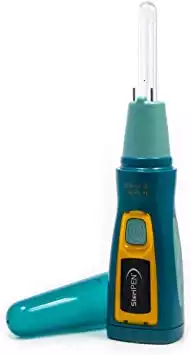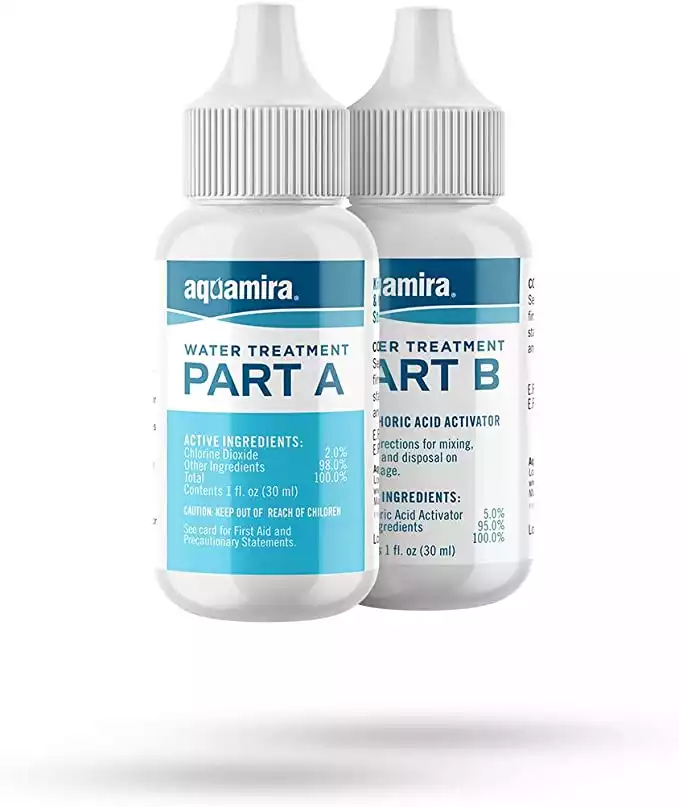In an emergency, taking a drink from fast moving water from a waterfall or stream is generally okay. While we can’t assure you that it’s completely safe, drinking fast moving water is better than nothing at all in a dire situation.
We’re often told that you shouldn’t drink water from a stream, river, or waterfall without treating it first. But, can you drink fast moving water without filtering or purifying it?
The short answer? Technically, you can’t assume that water is safe to drink from a river or stream, even if it’s fast moving.
When you’re in an emergency situation, however, you need to balance the risks of potentially getting sick with the consequences of severe dehydration.
Up next, we’ll walk you through everything you need to know about how you can safely drink water in the outdoors so you can feel confident on your next trip.
Can You Drink Fast Moving Water?
When you come across a glistening, fast-moving stream in the backcountry after a long day of hiking, you may be tempted to bend down and take a drink.
However, natural water sources, no matter how clean or pure they look, may be contaminated with pathogens. According to the Centers for Disease Control (CDC), rivers, streams, and lakes can be filled with infectious diseases like Giardia, Cryptosporidium, and Shigella.
If this water isn’t treated or filtered before you drink it, it can make you really sick, sometimes to the point of hospitalization.
What about fast moving water, you might ask?
Although waterborne illnesses are less likely to survive in cold, faster-moving water, there’s no guarantee of safety. In fact, according to the CDC, even pathogens like Giardia can survive for up to 1-3 months in water temperatures below 50ºF (10ºC).
In an emergency, a crystal clear, fast moving stream or waterfall will likely be the better option than drinking out of a smelly stagnant pond. But, we wouldn’t recommend making a habit of drinking untreated water, no matter how fast it’s moving.
Can You Drink From A Waterfall? Do Waterfalls Clean Water?
While you can drink water from a waterfall, there’s no evidence that suggests that waterfalls clean water.
Anyone looking to drink out of a waterfall should take the same precautions that they would follow when drinking out of a small river or lake. That means using a device, like the Lifestraw Go Water Bottle, to properly filter your water before you drink it.
Can You Drink Water From A River Or Stream?
If you’re heading out on a camping trip, at some point, you’ll have to fill up your water bottle. When you do, a river or stream is often a good bet for fresh-tasting water.
However, while you can drink from a river or stream, proper precautions are necessary. The Princeton University Outdoor Education Program recommends either filtering water, boiling it, treating it with chemical purification tablets, or using ultraviolet lights, such as the Steri-Pen.
- USB-rechargeable
- Treats up to 2113.4 gallons (8000L)
- Size: 7.3" x 1.65" x 1.3" (18cm x 4cm x 3cm)
- battery life up to 50 treatments/charge
How Can You Drink Water In Nature Safely?
Safely drinking water during a camping or hiking trip all comes down to finding quality water sources and using the correct filtration or treatment method to kill off any disease-causing bacteria.
When searching for a good water source to gather water from, keep the following in mind:
- Fast-moving water is better than stagnant water
- Opt for water that’s far from agricultural fields or pastures
- Stay away from sources with clear sources of contamination (e.g. animal carcasses nearby)
- Coldwater is preferred to warm water
- Choose clear, silt-free water whenever possible
For a step by step guide to choosing a good water source, check out this video from REI:
Once you have a great water source in front of you, you’ll need to have a method for treating it before you can drink it. There are 4 primary ways that we treat water in the backcountry: boiling, filtration, chemicals, and ultraviolet light.
Boiling
Boiling is often seen as the gold standard in water treatment because, when done properly, it can kill nearly any disease-causing organism, though it doesn’t remove silt and debris. The CDC recommends bringing your water to a rolling boil for at least 1 minute before consuming it.
There’s a bit of contention about what a “rolling boil” actually means and how long you have to wait before your water is safe to drink. Check out this video from NOLS, a major outdoor education school, to learn more:
Filtration
Filters work by physically separating disease-causing organisms, dirt, and debris from your drinking water.
They vary in effectiveness, based on pore size, but most are unable to filter out viruses. The good news is that viruses are less of a problem in North American waters, so filters are usually more than sufficient for hikers and campers.
There are many different filters out there, and some, like the Lifestraw Go, combine a filter and a water bottle into one neat package for added convenience.
Chemical Treatments
Chemical treatments are popular because they are lightweight and highly packable. They’re also able to kill off nearly any pathogen in just a few minutes. One drawback to chemical treatments, like Aquamira, is that they leave behind an aftertaste that some people don’t like.
- With 4-year shelf life from mfg date
- Treats up to 30 gallons
- Bottle size is 1 oz (30ml)
Ultraviolet Light
Ultraviolet treatments, such as the SteriPen, are popular because they can kill almost all pathogens in a few seconds. Plus, they don’t affect the taste of your water and they require minimal physical effort.
The downside is that ultraviolet systems can be expensive, and they are electronic devices, which can break or malfunction in the outdoors.
What Are The Risks?
Properly treating or filtering your water is the best defense that we have to protect ourselves from disease-causing bacteria while camping.
Although people sometimes choose not to filter their water, they expose themselves to waterborne diseases like cryptosporidium, giardia, campylobacter, salmonella, hepatitis A, E. coli, and shigella.
While the incidence of these diseases in North America and most of Europe is fairly low, you can substantially minimize your risk of getting sick by treating your water. This is especially true if you travel to certain parts of the world, including much of Africa, South America, and Asia.
The Verdict
Any water source you come across in the backcountry, no matter how clear and fast moving, should be treated or filtered to prevent diseases. Filters, like the Lifestraw Go Water Bottle provide a simple and effective way to create quality, disease-free drinking water while outside.
If you have any questions, please feel free to let us know in the comments below and we’ll get back to you as soon as we can.
Remember: In an emergency, go ahead and drink that fast-moving water. Otherwise, it’s best to treat or filter your water at all times when outside.










